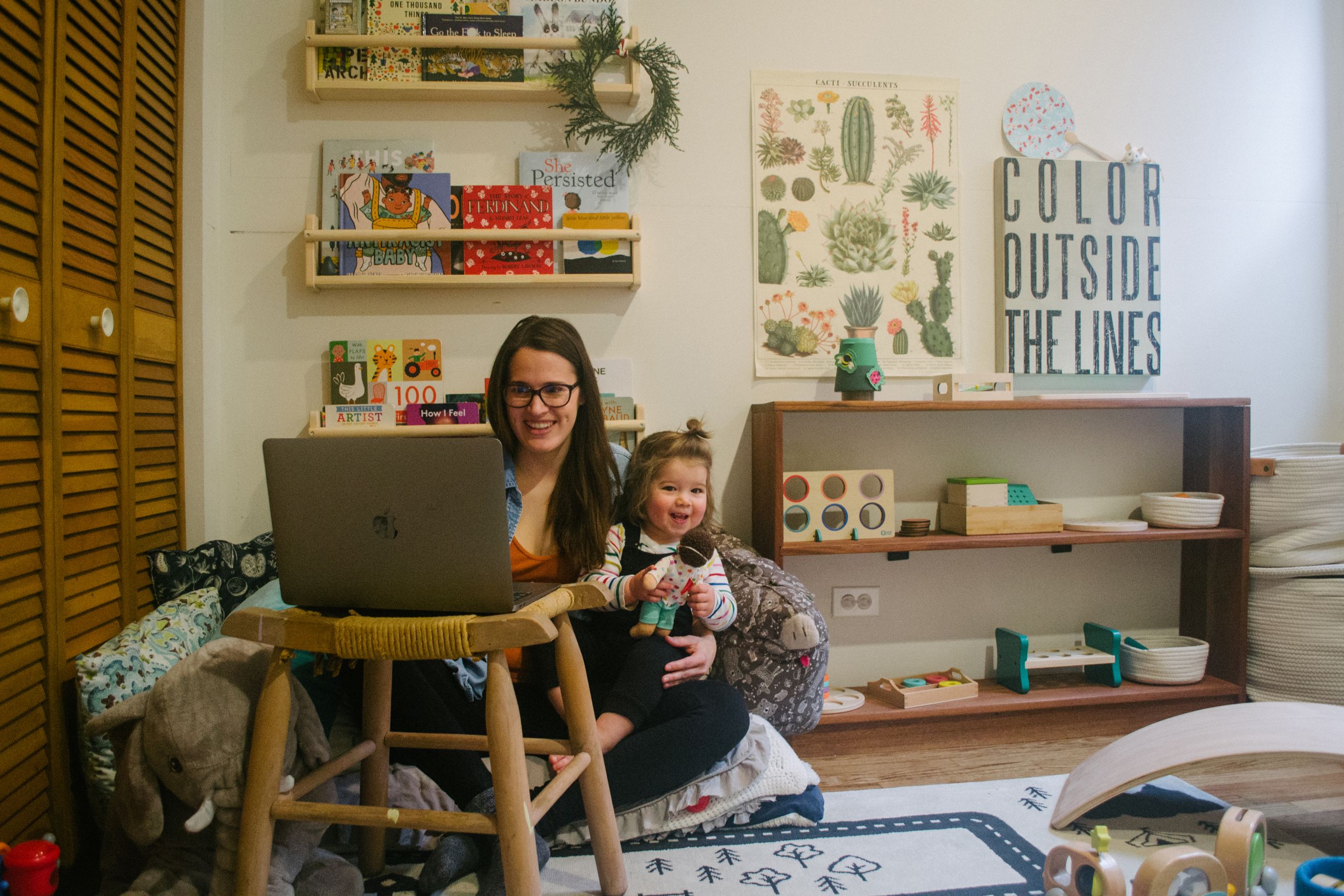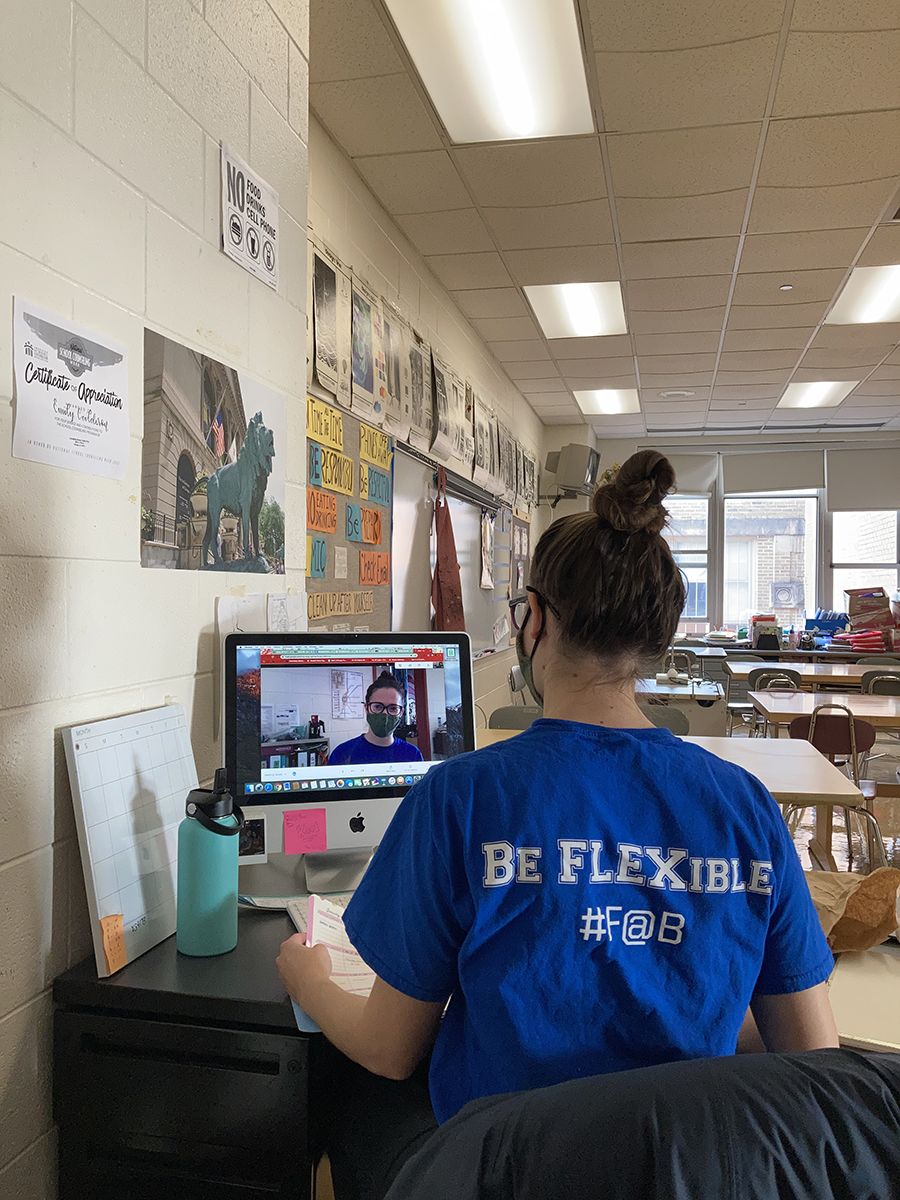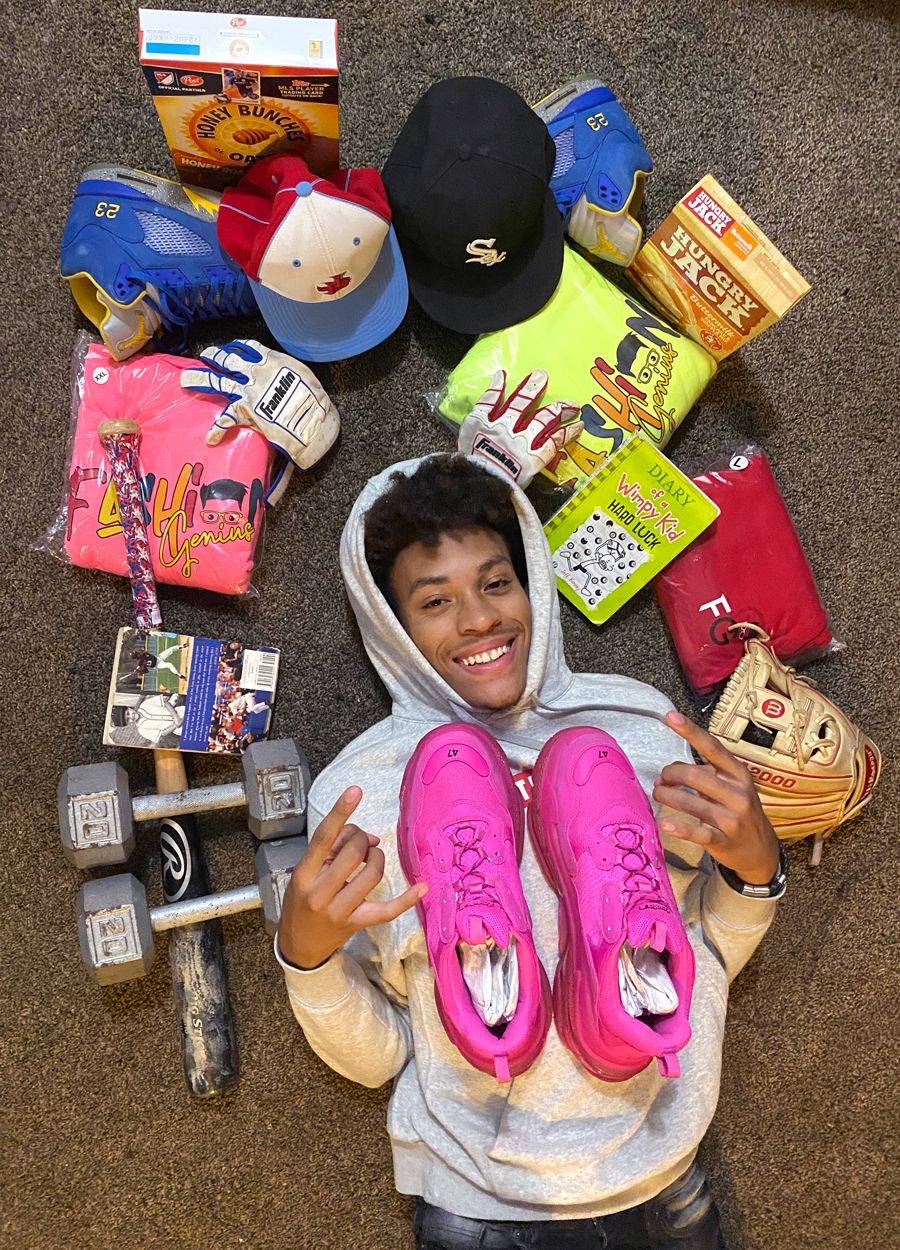Where I Work: Emily Calderon
(MA 2017)

by Bree Witt
If you look closely and use a bit of imagination, Emily Calderon’s makeshift classroom vaguely resembles any you might see in a Chicago Public School (CPS) building: behind her desk (actually, a small stool propping up her laptop) is a cozy reading nook filled with books (board books for very early readers, like Chicka Chicka Boom Boom); to the left is a work area (or, rather, a baby’s changing table for her daughter); and on the floor sit a few fluffy pillows (Calderon’s desk chair).
Unconventional, to say the least, but as an artist and educator, Calderon (MA 2017) is used to creative problem solving. She’s been tasked to do just that since Gwendolyn Brooks College Preparatory Academy, where she teaches art, abruptly closed last March. During the many months of working out of a nursery in her two-bedroom Pilsen apartment, Calderon has had to find new ways of teaching art to students—many of whom she’s never met in person and who might not have basic art supplies at home or even a fully functional, CPS-issued laptop.
“I had to learn to be comfortable on camera,” said Calderon. “They [might] have their cameras off. So, I’m really just kind of talking to a screen, performing as if I were on a daily talk or news show.”
Rather than adapting existing teaching plans from past years, Calderon has had to rethink her entire approach.

Calderon in her classroom at Gwendolyn Brooks College Preparatory Academy
Calderon in her classroom at Gwendolyn Brooks College Preparatory Academy
“The three art teachers at Brooks College Prep—myself, John Famera, and Jacob Mitchell—had to revamp our curriculum. We are going week by week. We have a general idea, the big idea. Then, we break it down,” said Calderon. “In the beginning, we were kind of figuring out this whole environment and what the kids could do; what they’re interested in, what we’re interested in.”
So, instead of creating portrait paintings on a canvas in the style of Kehinde Wiley, Calderon’s class became the subjects in “quaranthings,” a series of photographs where each student lays on a surface surrounded by items they’ve used at home during the pandemic. Quaranthings produced images of students with a well-used Rawlings baseball bat, a blue-and-red Nintendo Switch, an open box of Honey Bunches of Oats cereal, and a sketch book.

Inspired by a lesson from art educator Libby Beaty and the work of contemporary photographer Gregg Segal, “quaranthings” featured students surrounded by items they’ve used at home during the pandemic. Student: Jaylun Camper
Inspired by a lesson from art educator Libby Beaty and the work of contemporary photographer Gregg Segal, “quaranthings” featured students surrounded by items they’ve used at home during the pandemic. Student: Jaylun Camper
“I am definitely learning more about the students on an individual level, which is intriguing because, for most of them, I haven’t seen their faces.”
Teaching and learning from a personal space like one’s bedroom or kitchen creates a vulnerability shared between Calderon and her students, ultimately strengthening their connections with one another.
“I really think [my students] having seen me be human—and, like, they’ve seen a lot of my house—is really interesting. I’m really honest and upfront with them about my struggles through this pandemic. Some of them definitely have kind of opened up and been very vulnerable with the moment .... It’s really great being an art teacher through all of this because we’re able to offer kind of art therapy.”
Though Calderon is back in her classroom for the spring semester, some of the lessons learned during the pandemic will be lasting, giving her students more space to create.
“If anything, I’ve learned what really matters. And some days, I spend 30 minutes just listening to the kids. Life is happening outside of the classroom. What you may have scheduled may not be what needs to happen at that moment. So, that’s the biggest thing I’m going to take back into the classroom.” ■
